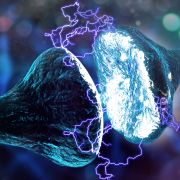
Post-Traumatic Stress Disorder
Post-traumatic stress disorder (PTSD) is a mental health condition that develops in response to experiencing or witnessing a distressing event involving the threat of death or extreme bodily harm. Examples of traumatic events that can trigger PTSD include sexual assault, physical violence, and military combat. PTSD can also occur in the wake of a motor vehicle accident, a natural disaster (e.g., fire, earthquake, flood), a medical emergency (e.g., having an anaphylactic reaction), or any sudden, disruptive incident.
Contents

PTSD has likely existed throughout human history. During World War I, it was known as “shell shock” and was first thought to affect only soldiers. PTSD was officially recognized as a mental health disorder in 1980. Researchers believe that the changes to body and mind that occur in PTSD reflect an attempt of the system to protect the person from further experiences of danger.
Anyone who has survived a deeply disturbing experience of any kind can develop PTSD symptoms. PTSD is characterized by vivid, intrusive memories of the precipitating event, hypervigilance and hyper-reactivity to possible threats, nightmares, and mood disturbances. Those suffering from PTSD often report feeling anxious or scared even in the absence of danger, as if it could strike at any time.
The condition may manifest in anxiety-like symptoms, emotional numbness or dysphoria, anger and aggression, or some combination of those states. It can feel like the normal stress response is locked into permanent overdrive, and those with PTSD often find it difficult to function normally in everyday life.
Many people experience a traumatic event at some point in their lives, although only a small proportion of them develop PTSD. In the United States, about 3.5 percent of people may have the disorder, including children. For some, the stimulus is not one distressing incident but a series of incidents occurring over a period of time, as may be the case with sexual or physical abuse during childhood. The prevalence of the disorder is higher among veterans of combat, ranging from 10 to 30 percent. About half of those with PTSD recover within three months, but for many others, the condition becomes chronic.
Research shows that some people are at higher risk than others for PTSD. Most vulnerable are persons who have a history of multiple adverse experiences or mental difficulties. Having little social support or recurrent ongoing life stress are also risk factors. Physical impairment and job loss add to the risk.
Experiencing distress, fear, anxiety, shock, and other negative emotions is normal in the immediate aftermath of a disturbing incident. A diagnosis of PTSD is generally considered if such symptoms persist for at least a month and interfere with daily functioning. PTSD symptoms can last anywhere from months to years following the originating trauma and can be exacerbated by exposure to more trauma.

Those with PTSD suffer from classic anxiety symptoms, such as insomnia and worry. They are hypervigilant and constantly alert to possible dangers. Typically, they have an exaggerated startle response. Unexpected sound or movement can provoke a strong, violent reaction, as if the precipitating danger were happening again that instant. That original traumatic event is often recalled spontaneously in flashbacks of memory so vivid and intense that the person feels as if they are living through the situation again in the present. They may even feel the same panic, dread, and terror that were originally evoked.
Anxiety is not the only form of distress sufferers experience. Disrupted mood is common, and people often feel the guilt and shame typical of depression. Some people with PTSD may experience apathy or detachment from others. They may also regard others with suspicion and display hostility. Those with PTSD may find it difficult to trust anyone.
In an attempt to feel safe, many with PTSD withdraw from the normal activities of life altogether as a way to avoid reminders of the trauma, which tend to occur randomly. Some seek relief by consuming alcohol or other drugs. There is no guarantee that PTSD symptoms will go away on their own or lessen with time, but there are resources that can help people regain a good quality of life.
For more information on symptoms, causes, and treatment of PTSD, see our Diagnosis Dictionary.
Consultation with a mental health professional, who conducts an assessment of symptoms, is essential for someone concerned about having post-traumatic stress disorder. PTSD is a clinical diagnosis, meaning that PTSD is diagnosed by observing a person’s symptoms. Anyone who has been exposed to trauma and who finds that the experience interferes with daily functioning for more than a month may be diagnosed with PTSD.
One of the most common myths about PTSD is that everyone who goes through trauma will develop post-traumatic stress disorder. While it’s completely normal to experience PTSD-like symptoms immediately following a traumatic event, these usually resolve within a month, especially if the individual receives strong emotional support. PTSD symptoms often overlap with acute stress disorder (ASD), an intense but brief psychological reaction to a traumatic or life-altering event that doesn’t persist after 30 days.
PTSD reflects the response of the human nervous system to a disturbing experience. Such experiences tend to be highly unpredictable, so that there is no way to predict whether a person will develop the disorder. Researchers have instead focused on delineating general and specific factors that make individuals vulnerable or resilient in the face of many kinds of adversity.
While it’s impossible to predict a person’s response to trauma, certain risk factors can make it harder for some people to cope and thus more likely for them to develop post-traumatic stress disorder. These can include problems managing emotions, the presence of other mental health conditions, adverse childhood experiences (e.g., parental separation or death, financial difficulty, a dysfunctional family), and having previously survived one or more traumatic incidents. Women have higher rates of PTSD than men. Professions where individuals are exposed to stress and danger on a regular basis, such as law enforcement and medicine, can increase the likelihood of getting PTSD. Intergenerational trauma and a person’s cultural background may also play a role.
Studies have identified factors that make people resilient in the face of many kinds of adversity. Researchers on a quest to cure PTSD observe that in some cases, such as combat, advance preparation can be protective. For example, stress-inoculation therapy, which uses imagery and video simulations to expose people to a progression of challenging circumstances, can help individuals cultivate coping skills. The training seeks to develop cognitive flexibility and a sense of control over one’s own stress response, both skills that can boost resilience in the face of trauma.

Researchers are intensely investigating what trauma does to the brain, in the hope of developing effective treatments for PTSD. Scientists know that in PTSD, the stress circuitry in the brain goes awry, disrupting communication between several brain centers. These include the amygdala, which normally monitors incoming perceptions and red-flags threats, putting systems on high alert and setting off the stress response; the prefrontal cortex, or executive control center of the brain, which normally senses when a threat is over and dampens amygdala activity; and the hippocampus, where memories are stored and retrieved.
Scientists find that in PTSD, the prefrontal cortex is underactivated, and the amygdala is overactivated. There is evidence that a core problem lies in the connections between individual nerve cells, or synapses; there is a deficit in connectivity, limiting communication between nerve cells. As a result, individuals with PTSD lose psychological flexibility: They stay stuck in an over-the-top response pattern, and their memories resist the modification that normally occurs over time.
PTSD is a whole-brain disorder that involves the brain circuits of fear, stress, and anxiety. The amygdala (which sets off the fight-or-flight response) becomes hyperactive. Meanwhile, the prefrontal cortex (the CEO, or executive functioning center of the brain) grows sluggish or lacks sufficient neural connections with the amygdala to calm down the fear response. In people with PTSD, the hippocampus (the verbal memory center) tends to be smaller than normal and yet more active in response to perceived threats.
In response to an overactive amygdala and underactive prefrontal cortex, the brain releases large amounts of norepinephrine in the presence of perceived danger. This can affect brain functioning in several ways, leading to hyperarousal, hypervigilance, and increased wakefulness and disrupted sleep. PTSD sufferers may also find that when they are emotionally aroused, they have little control over their reactive anger and impulsive behaviors. The weight of negative emotions such as fear and anger can diminish positive feelings and create problems at work and in personal relationships.
Yes, the brain scans of people with PTSD are different than those without this condition. For starters, the hippocampus (the center of memories and emotions in the brain) shows reduced volume, and heightened activity appears in the amygdala (which is involved in the body’s fear response). However, it’s important to note that PTSD is not diagnosed from brain scans. Only a medical professional can diagnose post-traumatic stress disorder based on a patient’s clinical symptoms.

Therapy
Treatment for PTSD usually centers around talk therapy, Psychotherapy, particularly cognitive behavioral therapy, has proven to be one of the most reliable treatments for PTSD. It consists of several parts: exposure therapy, stress inoculation training, and cognitive reappraisal. One major goal is to restore cognitive flexibility so that sufferers can talk about their bad experiences and modify the emotional force of the memory. Underlying such improvements are increases in nerve-cell connectivity, a hallmark of all effective therapies.
New forms of treatment are under development that combine talk therapy and medication in innovative ways for the 50 percent of sufferers whose symptoms are not relieved by current strategies. Some of the most promising new approaches involve psychedelic drugs.
Psychedelic-Assisted Psychotherapy
Psychedelic drugs are being tried under controlled conditions to boost the power of psychotherapy. Taken under the guidance of a trained psychotherapist, such drugs are helping patients process the distressing emotions associated with their traumatic experience so that they are no longer constantly on the lookout for and hyperreactive to signs of danger.
One such drug is the anesthetic ketamine, sometimes known as the club drug Special K; it is already approved for use in treating severe depression. When given (by injection) in concert with a specific program of psychotherapy, it has been shown to significantly speed recovery from PTSD, accomplishing in days what might otherwise take months.
Also under study for such use is MDMA, also known as Ecstasy or Molly. When given to PTSD patients just before a therapy session, researchers find it dramatically speeds up the therapeutic process. It allows even those with chronic PTSD to talk about deeply disturbing events and regain control of their reactivity.
Trauma-informed therapists recognize the signs of PTSD and focus on treating the whole person. They understand that someone’s experiences, particularly traumatic ones, can affect their entire lives, increasing their risk of physical and mental health issues. Trauma-informed therapists apply their knowledge of trauma and its effects in treating patients, with an eye to avoiding re-traumatization. However, trauma experts caution not to fall for the myth of trauma-informed care: Not all individuals who have experienced trauma develop PTSD, and PTSD is not necessarily the main causal factor in future problems, such as incarceration, poverty, joblessness, or homelessness.
Psychedelics like MDMA (also known as ecstasy or Molly) can help patients with PTSD reconsolidate traumatic memories. PTSD sufferers experience unpredictable flashbacks to the traumatic event and often re-live the same stress, fear, and other negative emotions as if they are happening in real-time. Given in combination with therapy, psychedelics help patients get the emotional distance from their traumatic memories that they need in order to process them and heal.
Mantram repetition therapy is a type of mindfulness therapy that is used to help calm people and shield them from the effects of intrusive thoughts. It involves repeating a “mantram”—a meaningful word or phrase—in order to tolerate negative thoughts and feelings without reacting to them. Mantram repetition appears to be a promising additional therapy for post-traumatic stress disorder, enabling PTSD sufferers to slow down reactivity patterns and direct their attention in more healthy ways without having to engage with their traumatic memories.
If you know a person who recently had a traumatic experience, you can help them bounce back. Reach out to them. Don’t force them to talk; just let them know you will be there whenever they are ready to open up. You don’t have to be somber all the time around them—in fact, showing a sense of humor can help some survivors cope better with their feelings. Don’t take it personally if they prefer not to talk to you about the trauma; sometimes people need to feel like life goes on, and they can have normal relationships that aren’t defined by their post-traumatic stress disorder.














